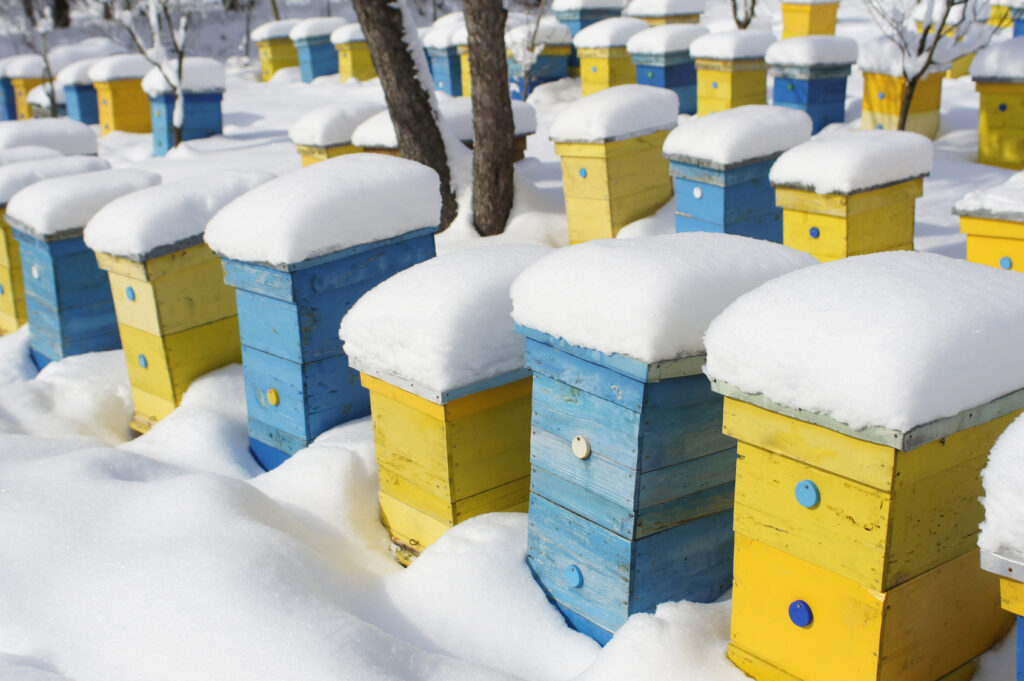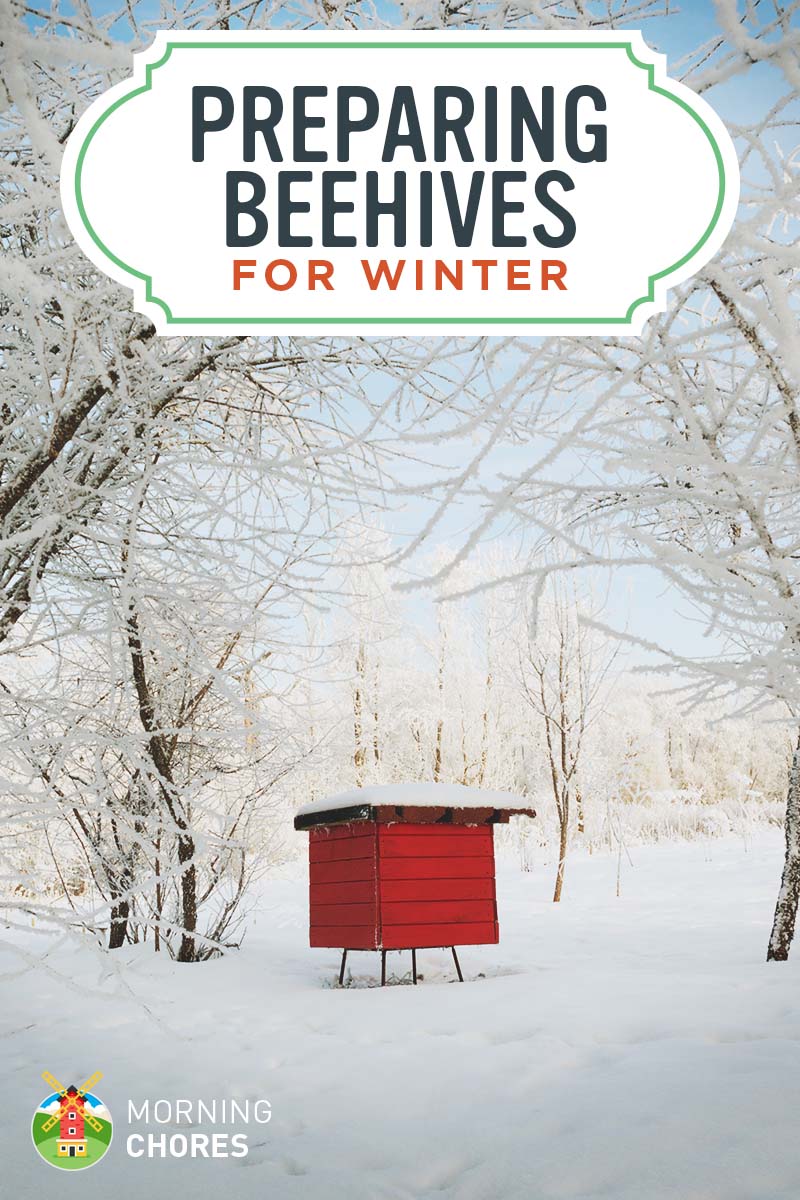
As winter approaches, it is essential to take proactive measures to ensure the well-being and survival of your bees. Cold weather can be a challenging time for these remarkable insects, but with proper care and attention, you can help them thrive during the winter months. This article will provide you with valuable tips and insights on how to protect your bees from the harsh conditions, maintain their health, and support their natural resilience. By implementing the right strategies, you can give your bees the best chance of staying strong and vibrant, ready to flourish when spring arrives.
Preparing Your Bees for Winter
Winter can be a challenging time for bees, but with proper preparation, you can help ensure their survival and health during this cold season. There are several key steps you can take to prepare your bees for winter, including assessing beehive health, providing adequate food stores, insulating the hive, reducing hive entrance size, and controlling moisture levels. By following these guidelines, you will be well-equipped to support your bees through the winter months.
Assessing Beehive Health
Before winter arrives, it is crucial to assess the health of your beehive. This includes conducting a thorough inspection of the hive to check for any signs of disease or infestation. Look for indicators such as damaged or discolored comb, abnormal bee behavior, or an excessive number of dead bees. If you notice any concerning signs, it is important to address them promptly and seek advice from a local beekeeping expert or veterinarian.
Providing Adequate Food Stores
Food stores play a vital role in sustaining bees during winter. Bees need a sufficient amount of honey to survive when forage is limited. Before winter sets in, ensure that your bees have enough honey reserves to last them through the cold months. This means leaving an appropriate amount of honey in the hive, typically around 60 pounds (27 kilograms) for a healthy colony. It is essential to monitor the honey levels regularly and supplement if necessary to prevent starvation.
Insulating the Hive
Insulating the hive can help regulate the temperature and protect the bees from extreme cold. Bees generate heat through their collective body movements, but insulation helps retain this warmth. Use materials such as foam or hive wraps to insulate the hive. These can be applied to the outside of the hive, covering the sides and top, leaving only the entrance open. Insulation provides an extra layer of protection that can make a significant difference in the survival of your bees.
Reducing Hive Entrance Size
During winter, it is important to reduce the hive entrance size to prevent drafts and heat loss. By reducing the size of the entrance, you can help the bees maintain a stable temperature within the hive. Use an entrance reducer or a piece of wood to decrease the size of the entrance, leaving only a small gap for the bees to enter and exit. This adjustment helps conserve heat and prevents cold air from rushing into the hive.
Controlling Moisture Levels
Controlling moisture levels inside the hive is crucial for the bees’ well-being during winter. Excess moisture can lead to condensation, which in turn can cause mold growth and compromise the health of the colony. To prevent excess moisture, it is important to ensure proper ventilation within the hive. Ventilation allows for airflow, reducing the risk of condensation. Additionally, using moisture absorbers, such as desiccant packs or absorbent material, can help maintain optimal moisture levels and promote a healthy hive environment.
Monitoring Beehive Health During Winter
While winter can be a period of reduced bee activity, it is essential to continue monitoring the health of your beehive throughout the season. By regularly checking key factors such as the hive’s weight, temperature, bee activity, and controlling varroa mite infestation, you can detect and address any potential issues promptly.
Checking the Hive’s Weight
Monitoring the weight of the hive is a crucial aspect of winter hive management. By regularly weighing the hive, you can assess the bees’ honey stores and determine if they have enough to sustain them throughout winter. If the hive becomes significantly lighter than expected, it may indicate that the bees are running low on food. In such cases, it is important to provide supplemental feeding to prevent starvation.
Monitoring Temperature in the Hive
Maintaining an optimal temperature within the hive is essential for the bees’ survival. Bees cluster together and generate heat to keep the colony warm during winter. Use a hive thermometer to monitor the internal temperature regularly. The ideal temperature for bees during winter is around 93-97 degrees Fahrenheit (34-36 degrees Celsius). If the temperature falls below this range, it may indicate that the bees are struggling, and additional measures may be necessary to keep them warm.
Assessing Bee Activity
While bee activity is generally reduced during winter, it is still important to observe the level of activity within the hive. Look for signs of life, such as bees flying in and out of the entrance or bees visible on the outside of the hive. A lack of activity, or bees clustering tightly without movement, may indicate that the colony is not thriving. In such cases, it is essential to investigate the cause and take appropriate action, which may include supplemental feeding or seeking professional advice.
Controlling Varroa Mite Infestation
Varroa mites are a common threat to bee colonies, and they can cause significant damage if left unchecked. Checking for varroa mite infestation during winter is crucial to ensure the long-term health of your bees. Conduct regular mite counts using approved methods, and if the mite levels exceed the threshold, take appropriate measures to control their population. This may include treatments with approved miticides or implementing integrated pest management techniques.
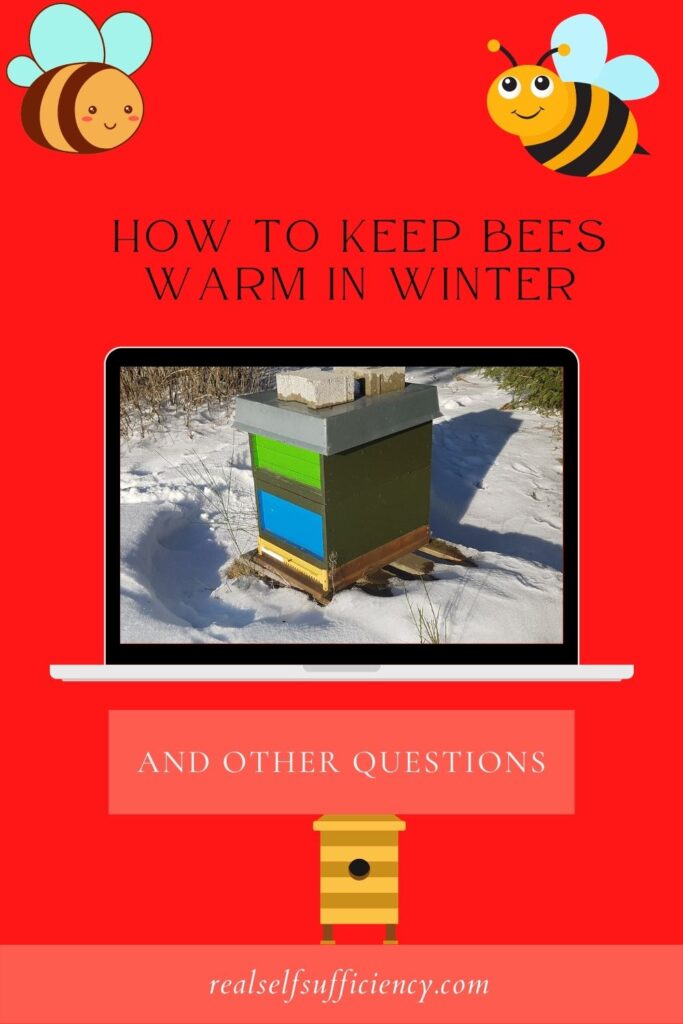
Protecting the Hive from Extreme Cold
Winter can bring frigid temperatures, making it vital to provide protection for your beehive. By implementing windbreaks and shelters, using hive wraps or insulation, and being prepared to feed sugar syrup in emergencies, you can help your bees endure even the coldest weather.
Windbreaks and Shelter
Windbreaks and shelters can help shield your hive from strong winds, which can quickly strip away heat generated by the bees. Place the hive in a location that is protected from prevailing winds, or use physical barriers, such as fences or shrubs, to create a windbreak around the hive. This minimizes heat loss and keeps the bees more comfortable during winter.
Using Hive Wraps or Insulation
Hive wraps or insulation provide an extra layer of protection to help keep the hive warm and shielded from extreme cold. Insulating materials, such as foam or specialized hive wraps, can be applied to the outside of the hive. These materials help retain the heat generated by the bees, creating a more stable and cozy environment for them. Be sure to leave the entrance open and monitor the internal temperature to ensure the insulation is effective without causing overheating.
Feeding Sugar Syrup in Emergencies
In cases of emergency, when bees are running critically low on food, it may be necessary to provide them with supplemental feeding. Sugar syrup can serve as a lifeline for bees during times of scarcity. prepare a mixture of sugar and water in a ratio of 2:1 or 1:1, depending on the immediate need. Feed the syrup using a feeder placed directly on top of the frames or inside an empty hive body. Be cautious not to disrupt the cluster of bees while providing emergency feeding.
Ensuring Proper Ventilation and Moisture Control
Proper ventilation and moisture control are essential for maintaining a healthy hive during winter. Without adequate ventilation, moisture can build up and lead to condensation, potentially causing mold growth and compromising the bees’ health. By understanding the importance of ventilation, using moisture absorbers, and preventing condensation and mold, you can create a suitable environment for your bees.
Ventilation Importance
Ventilation is crucial for maintaining air circulation within the hive and preventing excessive moisture buildup. Bees generate moisture through their respiration and activities, and without proper ventilation, this moisture can accumulate inside the hive. To ensure adequate ventilation, provide an upper entrance that allows for airflow without creating drafts. This helps carry away excess moisture and prevents condensation.
Using Moisture Absorbers
To further control moisture levels inside the hive, consider using moisture absorbers. Desiccant packs or absorbent materials, such as sawdust or wood shavings, can help soak up excess moisture and maintain optimal humidity levels. Place these absorbers in strategic locations within the hive, such as near the upper entrance or on the top of the inner cover.
Preventing Condensation and Mould
Condensation is a common issue during winter, and if left unchecked, it can lead to mold growth and compromise the bees’ health. To prevent condensation, ensure proper ventilation and avoid excessive humidity inside the hive. Additionally, monitor the hive regularly for signs of mold. If mold is present, consider using a mold remediation technique recommended by a beekeeping expert or veterinarian to protect the bees from harmful mold spores.

Emergency Feeding and Heating Techniques
In extreme situations, emergency feeding and heating techniques may be necessary to save your bees from starvation or freezing. By familiarizing yourself with emergency feeding methods and understanding how to use heat sources to warm the hive, you can be prepared to provide immediate assistance when needed.
Emergency Feeding Methods
Emergency feeding may be required if your bees run out of food stores during winter. Sugar syrup can be used as a temporary solution to keep the bees nourished until they can forage for natural food sources. Prepare a syrup mixture following the recommended guidelines and provide it to the bees using a feeder placed either directly on top of the frames or inside an empty hive body.
Using Heat Sources to Warm the Hive
In cases where the temperature inside the hive drops dangerously low or there is a risk of freezing, it may be necessary to provide additional heat. Heat sources such as heat lamps or heated beekeeping blankets can be used to warm the hive. Ensure that any heat source used is safe and appropriate for beekeeping. Place the heat source outside the hive and set it up in a way that it does not come into direct contact with the bees or combustible materials.
Winterizing Equipment and Tools
In addition to taking care of your bees, it is important to winterize your beekeeping equipment and tools. By cleaning and storing your gear properly, you can ensure its longevity and be well-prepared for the next beekeeping season.
Cleaning and Storing Beekeeping Gear
Before storing your beekeeping gear for winter, it is essential to clean and sanitize it thoroughly. Remove any residual honey, wax, or propolis from the equipment, as these can attract pests and pathogens. Wash the equipment using hot, soapy water or an approved beekeeping equipment cleaner. Rinse and dry the gear completely before storing it in a clean and dry location. This helps prevent the spread of diseases and maintains the quality of your equipment.
Taking Care of Beekeeping Tools
Your beekeeping tools are valuable assets that should be properly cared for during winter. Clean and sanitize the tools, removing any traces of honey or propolis. Check for any signs of wear and tear, such as loose or damaged parts. Repair or replace any damaged tools to ensure they are in optimal condition for the upcoming beekeeping season. Store the tools in a dry and secure location to protect them from moisture and potential damage.
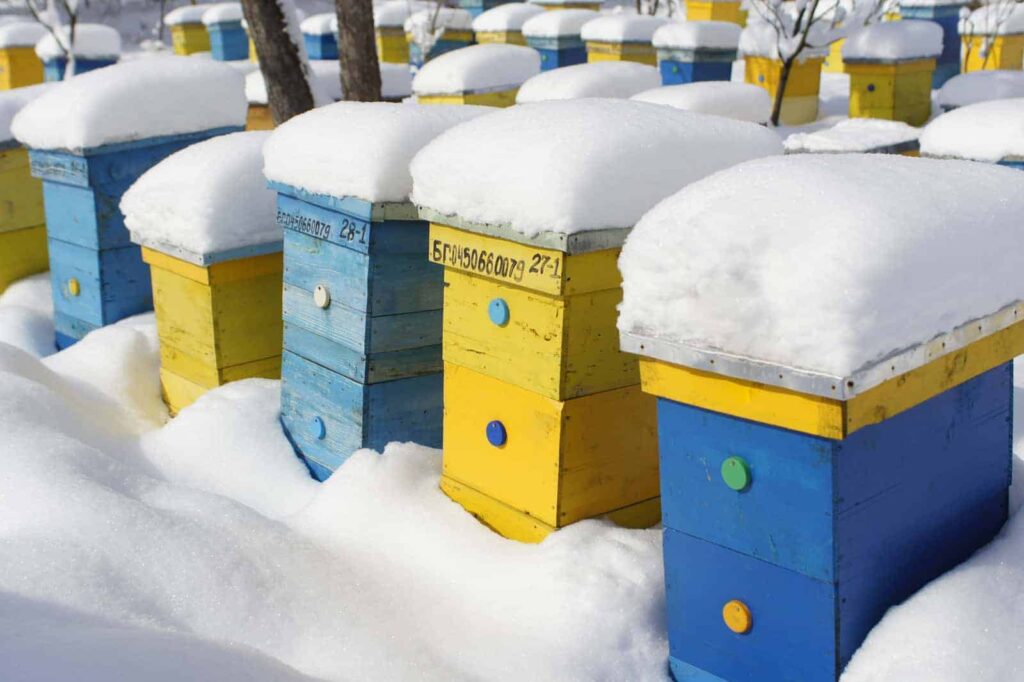
Providing Water Sources for Bees
Water is a vital resource for bees all year round, including during winter. By providing accessible water sources for your bees, you can help ensure their hydration and well-being.
Water Accessibility
In winter, natural sources of water may freeze, making it difficult for bees to access water. To support your bees’ water needs, provide an easily accessible water source near the hive. Use a shallow basin or birdbath filled with fresh water and place it within close proximity to the hive. Add pebbles or floating objects to provide landing spots for the bees and prevent drowning.
Creating Bee-Friendly Water Stations
Creating bee-friendly water stations can help attract bees and provide them with a safe and convenient water source. Add elements such as rocks, pebbles, or floating plants to the water station to make it more appealing to the bees. Regularly maintain and monitor the water station to ensure it remains clean and filled with fresh water throughout winter.
Educating Yourself on Winter Beekeeping
Winter beekeeping requires specialized knowledge and skills to ensure the well-being of your bees. By educating yourself through learning from local beekeepers, attending winter beekeeping workshops, and joining beekeeping associations, you can expand your knowledge and become a more confident winter beekeeper.
Learning from Local Beekeepers
Local beekeepers can offer valuable insights and advice based on their experience with winter beekeeping in your specific area. Reach out to local beekeeping associations or individuals and ask if you can learn from them. Engaging with experienced beekeepers can provide you with practical tips and guidance tailored to the unique challenges of your location.
Attending Winter Beekeeping Workshops
Winter beekeeping workshops are a great opportunity to enhance your understanding and skills related to winter hive management. Look for workshops or seminars offered by beekeeping organizations, universities, or research institutions. These events often cover topics such as winter preparation, disease prevention, and emergency measures. Attending these workshops can help you stay up-to-date with the latest practices and gain valuable insights from experts in the field.
Joining Beekeeping Associations
Joining a local beekeeping association offers numerous benefits for beekeepers, especially during winter. Associations provide a supportive community where you can connect with fellow beekeepers, exchange information, and seek advice. Many associations offer winter-specific resources, such as newsletters, webinars, and mentorship programs. By becoming a member, you can gain access to these valuable resources and foster relationships with experienced beekeepers.
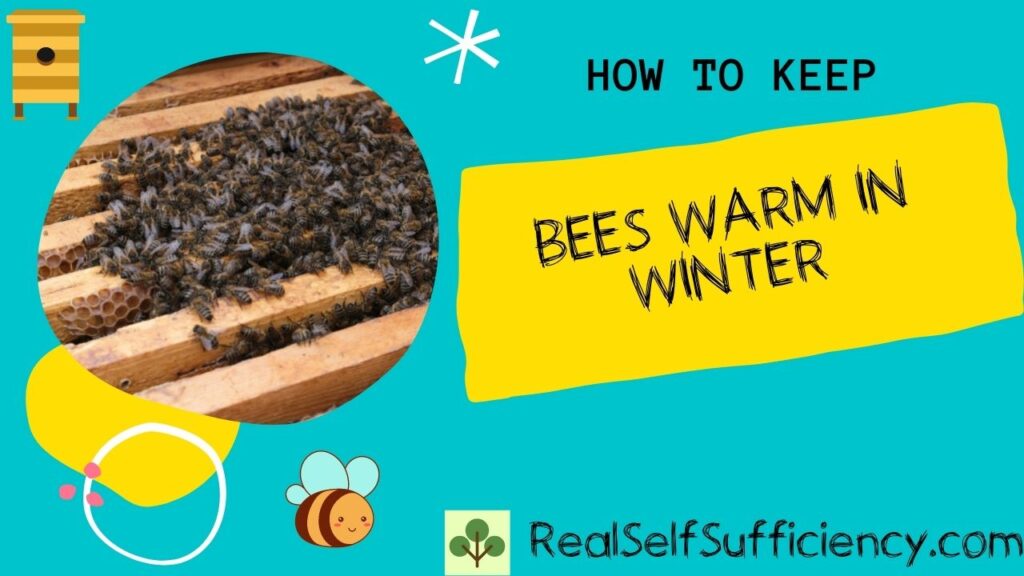
Preparing for Spring and Nectar Flow
As winter comes to an end, it is crucial to start preparing for spring and the nectar flow. By monitoring colony strength, feeding stimulating syrup, and preparing for swarm prevention, you can set your bees up for a successful transition into the warmer months.
Monitoring Colony Strength
As winter concludes, assess the strength of your bee colony. Check for signs of a healthy queen, adequate population size, and sufficient food stores. If necessary, consider requeening or boosting the population by combining weaker colonies. A strong and vibrant colony is essential for maximizing honey production and overall hive productivity.
Feeding Stimulating Syrup
To encourage brood production and stimulate the bees’ activity, consider feeding them a stimulating syrup as winter comes to an end. Mix a syrup solution with a higher concentration of sugar to provide the bees with readily available energy. This helps boost their metabolic activity and kickstart brood rearing, supporting the growth and development of the colony.
Preparing for Swarm Prevention
Springtime is a period when the risk of swarm increases as the bees’ population expands rapidly. To prevent swarming, maintain ample space within the hive by adding additional supers or frames. Conduct regular inspections to identify signs of swarm preparations, such as queen cells, and take appropriate measures to prevent swarming, such as artificial swarm techniques or splitting the colony.
Springtime Hive Management
Spring marks the start of a more active period for bees and requires diligent hive management to ensure their well-being. By spring cleaning the hive, managing the brood and queen, and expanding hive space, you can support your bees’ growth and productivity.
Spring Cleaning of the Hive
Perform a thorough spring cleaning of the hive to remove any accumulated debris or dead bees. Inspect the frames for signs of diseases or pests and replace any damaged or moldy comb. Ensure that the hive components are clean and free from contamination. A clean hive provides a healthy environment for the bees and helps prevent the spread of diseases.
Brood and Queen Management
As spring brings increased brood rearing, it is crucial to monitor and manage the brood and queen. Ensure that the queen is actively laying and has enough room to lay eggs. Check for signs of brood diseases or queen problems, such as spotty brood patterns or queenlessness. If necessary, take appropriate actions, such as requeening or treating for diseases, to maintain a strong and healthy colony.
Expanding Hive Space
The arrival of spring brings a surge in nectar and pollen availability. To accommodate the bees’ increased foraging and storage needs, it is important to expand the hive space. Add supers or frames as needed to provide enough room for honey storage. This prevents overcrowding and allows the bees to thrive and produce an abundant honey harvest.
By following these comprehensive guidelines, you’ll be well-prepared to support your bees throughout the winter months and set the stage for a successful beekeeping season. Remember, protecting your bees and ensuring their survival during winter requires attention to detail, proactive monitoring, and continuous learning. With proper care and dedication, your bees can thrive through the winter and reward you with a healthy and productive hive.
